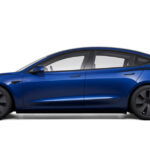The Firefly electric hatchback, backed by Nio, recently completed winter tests in China. Brand officials shared a video showcasing the car’s specifications after the tests were successfully conducted. The Firefly EV was unveiled on December 21 at Nio Day 2024, with pre-orders starting at a price of 148,800 yuan (approximately 20,300 USD).
The winter tests took place in Heihe, Heilongjiang province, known for its extreme cold temperatures. The location provided an ideal setting for testing the Firefly EV in harsh winter conditions. The video shared by Firefly revealed the car’s performance in temperatures as low as minus 30 degrees Celsius. The footage showcased the EV’s charging capabilities and its ability to drift on snowy roads with the ESC system turned off.
One of the key features highlighted in the video was the Firefly’s five-link independent suspension in the rear axle, developed in collaboration with Multimatic, a renowned automotive components supplier. Additionally, the car incorporates the IPB one-box power brake solution from Bosch, ensuring efficient braking performance.
The Firefly EV is designed to meet China-EU five-star safety standards and boasts 15 active safety functions. With a rear-wheel-drive configuration and a body length of around four meters, the car offers a balanced weight distribution between axles. The European specification of the vehicle showcased in the video indicated a WLTP range of 225 km with a 75% charged battery, translating to a full battery range of approximately 330 km.
Further details about the Firefly EV include a turning radius of 4.7 meters, all-scenario parking support, and a spacious trunk capacity of 92 liters, expandable to over 1,250 liters. The car’s body structure comprises 83.4% high-strength steel, providing exceptional torsional rigidity of 35,700 Nm/degree, the highest in its class. Safety features such as nine airbags ensure passenger safety.
Interested buyers can now pre-order the Firefly EV in China at a starting price of 148,800 yuan (around 20,400 USD). With its impressive performance in winter tests and a range of advanced features, the Firefly electric hatchback promises to be a compelling option in the electric vehicle market. The COVID-19 pandemic has brought about unprecedented changes to our daily lives, affecting everything from the way we work and socialize to how we shop and travel. As we continue to navigate through this global crisis, it has become increasingly clear that the way we live our lives will never be the same again.
One of the most noticeable changes brought about by the pandemic is the way we shop. With restrictions on in-person shopping and the closure of many brick-and-mortar stores, online shopping has become more popular than ever before. E-commerce giants like Amazon have seen a surge in sales as consumers turn to online shopping for everything from groceries to electronics.
But it’s not just the way we shop that has changed – it’s also what we’re buying. As people spend more time at home, there has been a shift in consumer preferences towards products that enhance their living spaces. Home office furniture, workout equipment, and kitchen appliances are just a few examples of items that have seen a spike in demand.
The pandemic has also accelerated the adoption of contactless payment methods, as people seek to minimize physical contact with surfaces. Mobile payment apps like Apple Pay and Google Pay have become increasingly popular, offering a convenient and hygienic way to pay for goods and services.
In addition to changes in shopping behavior, the pandemic has also had a significant impact on the way we travel. With international travel restrictions in place and concerns about the safety of air travel, many people have turned to road trips and domestic travel as a safer alternative. RV sales have surged as people seek to explore the great outdoors while maintaining social distancing.
Furthermore, the hospitality industry has had to adapt to new health and safety protocols to reassure travelers and guests. Hotels and resorts have implemented enhanced cleaning procedures, contactless check-in options, and social distancing measures in common areas.
As we continue to navigate through the pandemic, it’s clear that the way we live our lives will continue to evolve. From the way we shop to how we travel, the lasting effects of the COVID-19 crisis will shape our habits and behaviors for years to come. It’s important for businesses and consumers alike to adapt to these changes and embrace new ways of living in order to thrive in the post-pandemic world.







